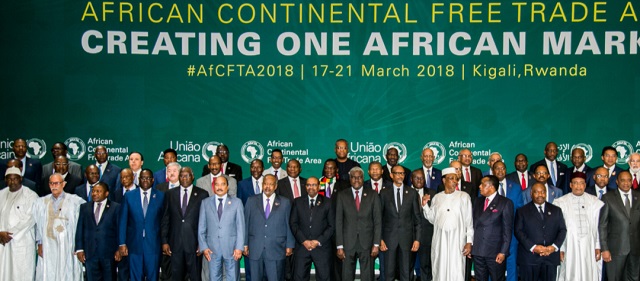
The agreement will have to dodge a patchwork of trade regulations and tariffs that make intra-African commerce costly
| Shoshana Kede | Excitement was palpable throughout the region as the dream for a continental free trade area in Africa got the final ratification needed to become a reality this month.
Gambia became the 22nd African country to ratify the African Continental Free Trade Area agreement (AfCFTA), meaning the bill now has the minimum number of ratifications needed to come into effect.
On March 21 Ethiopia became one of the last African nations to ratify the AfCFTA, bringing the tally of endorsing countries to 21.
The trade bloc spanning 49 countries with a combined GDP of $3trillion, will facilitate inter-regional trade, boost growth and help to alleviate poverty, its supporters say.
The news was tweeted by the African Union Commissioner for Trade and Industry Albert Muchanga: “Good news! The Parliament of The Gambia has approved ratification of AfCFTA Agreement making us meet the minimum threshold,” he said.
“The AfCFTA market is being born and is one step ready for launch of its operational phase in July this year.
The agreement, signed by 49 of the 55 African Union nations in March last year, will dodge a patchwork of trade regulations and tariffs that make intra-African commerce costly, time-consuming and cumbersome.
Its promotion of tariff-free movement of goods, people and services across the continent is also expected to favour SME’s, who account for 80% of Africa’s employment and 50% of its GDP, according to the World Bank.
But skeptics have pointed to the impending challenges of uniting countries with the greatest level of income disparity between them, under the umbrella of one trade bloc.
For example, over 50 percent of Africa’s cumulative GDP is contributed by Egypt, Nigeria and South Africa, while Africa’s six sovereign island nations collectively contribute just 1 percent.
The motion was brought before Gambia’s parliament by Lamin Jobe, Gambia’s trade minister who highlighted the trade benefits of deeper regional integration:
“This document will definitely serve as a take-off point to enhance the free movement of people, good and services.
“By using this there is a lot of advantages that we can gain from the implementation of this agreement,” he said.
This comes as Uganda’s private sector hope that new agreement will stimulate trade and investments across the continent. Gideon Badagawa, the executive director of the Private Sector Foundation Uganda also told The Independent last year in an interview that the Ugandan manufacturers and producers now have a market platform beyond the EAC and COMESA.
He said the government now needs to work with its counterparts to invest in a Common Infrastructure Fund to facilitate the building of infrastructure that link countries to enable private sector trade and investment across borders.
Data from African Import Export Bank in its 2018 Africa trade report shows that the trade deficit narrowed to $96.9 billion in 2017 compared with $132.5 billion in 2016.
Exports increased to $405.3 billion in 2017 from $344 billion a year earlier, while imports advanced to $502.3 billion from $476.6 billion.
The report also notes that whereas Africa’s trade with the rest of the world expanded 11% to $907.6 billion last year, the portion of trade within the continent declined to 14 % of the total. South Africa, Namibia and Nigeria accounted for more than 35 % of intra-Africa trade last year.
South Africa contributed a quarter of the region’s domestic commerce in 2017, mostly in oil imports from Nigeria and Angola.
****
Adapted from the African Business Magazine .Isaac Khisa contributed to this article
 The Independent Uganda: You get the Truth we Pay the Price
The Independent Uganda: You get the Truth we Pay the Price


